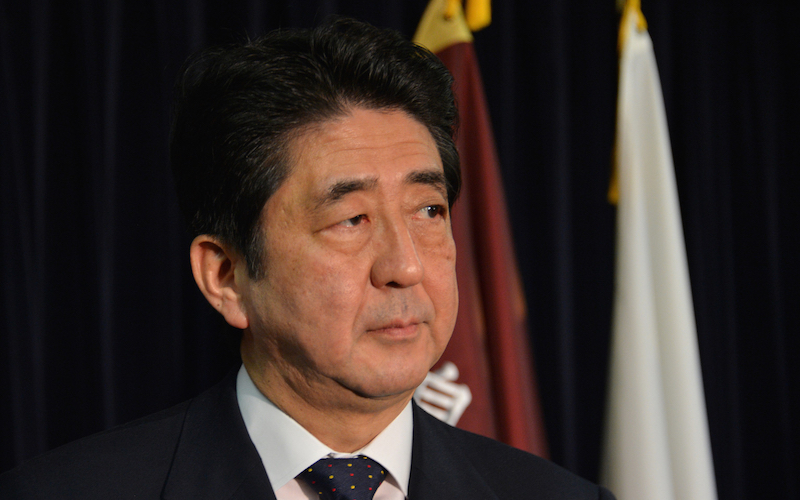
The Re-Militarization of Japan
Japanese Prime Minister Shinzo Abe is undoubtedly a nationalist. He has repeatedly called for strengthening Japan’s military and loosening the tightness on the leash that Japan’s post-World War 2 constitution created for it. His repeated visits to the Yasukuni Shrine along with a certain revisionist thinking regarding Japan’s behavior in Asia in the early 20th century is the hallmark of the new Japanese nationalism that seeks to portray Japan not as Asia’s conqueror but its liberator.
During his first time in office these maverick thoughts and his attempt to turn them into conventional issues were a strong factor in his rejection by the Japanese people and his eventual resignation. Shinzo Abe learned that the time was not yet right for such things to be brought into the mainstream. Fast forward almost a decade and not only are these same issues not taboo they are now seriously considered part of the mainstream of Japanese domestic politics.
The change was brought forth almost entirely by a more aggressive China that has incrementally begun to flex its muscles in the Pacific region. Before 9/11 few Americans would have agreed with the placing of armed guards and TSA agents in their nation’s airports.
After 9/11 few Americans would have agreed not to.
The rise of China is causing a 9/11 effect in Japan slowly allowing nationalist leaders like Mr. Abe to air ideas that would never have been discussed in polite Japanese society even 5 years ago. The more China beefs up its military the more the Japanese will follow suit. The only American ally able to threaten or contain a resurgent China in Southeast Asia is Japan.
Other allies (such as South Korea and the Philippines) even if part of a military alliance could never stall Chinese aggression. Therefore the game of thrones for supremacy in Southeast Asia has always been played between the Japanese and Chinese making them natural antagonists.
During the early 20th century this balance of power in the region was broken when China became colonized while Japan was able to achieve the best of both worlds forgoing the disadvantages of being colonized but getting the advantage of Western weapons and ways of military thinking and societal organization.
This led to the eventual subjection of Southeast Asia by Japan in the 1940s. The Sino-Japanese War was primarily between Chinese Nationalists and Japanese Nationalists. The West, as it has done in the Middle East, destabilized a region by taking out a massive counterweight to a regional power in effect removing the natural predator that kept it in check. A version of this is happening currently in Asia as the Chinese start to flex their muscles causing Japan to try to achieve counterweight status to avoid Chinese domination.
The Prime Minister of Japan believes in achieving this type of parity with his Chinese counterpart. The 200,000 member Japanese Self Defense Forces are, man-for-man, despite all the restrictions applied to them, are an effective force. Many nationalists in Japanese society who are considered Shinzo Abe’s core constituency have expressed discontent with self-defense forces and want to double or triple its size elevating it to the level of a normal professional military capable of both defensive and offensive operations.
Although this has not been something brought up by the Prime Minister one can clearly follow his line of thinking by recent actions he has taken. He was the main sponsor of a new nationalistic holiday in Japan, Restoration of Sovereignty Day, to celebrate the end of the American occupation of Japan.
He helped pass legislation allowing the Self-Defense Forces to conduct operations outside Japan especially in anti-terror programs. Even the sacred cow of Japan’s pacifism which is nuclear weapons could conceivably be on the table in a decade’s time. The leap from inception to possibility would be very short as Japan is a nuclear capable country (meaning it could develop nuclear weapons in less than a year if it wanted to).
Therefore, with Prime Minister Abe in power for the foreseeable future Japan may therefore be more reminiscent of Japan during the late Meiji period era rather than Japan during the 1960s and 1970s.

